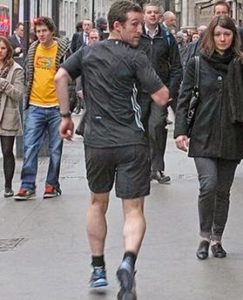There has been lots of research on the impact of our gluteal muscles in all aspects of movement and performance. We work with patients to help strengthen and activate their glutes, but different methods are more effective for different people. Our glutes provide stability, control and power for activities such as walking, running and squatting. There a three gluteal muscles; gluteus minimus, medius and maximus.
Gluteus minimus, like its name suggests, is the smallest of the gluteal muscles. It works very closely with gluteus medius to stop our leg rotating inward. Together they provide pelvic stability in standing and during movement. These muscles are particularly important when weight-bearing on one leg, which is something we do repeatedly when walking/running (although only momentarily). Gluteus Maximus is the biggest gluteal muscle, and the biggest muscle in the body. It covers a large area of your buttocks, and is what we mainly see when looking at someone from behind.
There are some common ways to improve how we use these muscles, and some that you may not have seen before. We can all appreciate the health benefits of walking regularly. Some of us run to gain greater results, but have many of us tried walking backwards? The concept of walking backwards is believed to originate in ancient China, a method used to improve health. Today, it is used by some athletes, neurology patients and Physiotherapists to help strengthen the gluteus maximus. Although the benefits don’t stop there!
Walking backwards raises our heart-rate more than walking forwards at the same speed, therefore burning more calories. It provides greater muscle activation, especially for our posterior chain; allowing us to strengthen our glutes, hamstrings and calf muscles (muscles that are often not firing as we would like them to in some of our patients). As a result of the different movement, the front of our legs can take more of a backseat, making our quadriceps work in a different way and giving them a rest from any over-training. For people with joint problems, walking backwards requires less knee bend, and causes less forces through the knee joint. Similar can be said for the spine, as it is suggested the action of walking backwards helps open our spinal joints easier, reducing stiffness.
Walking backwards is not easy to do though (I’ve tried it), but that’s all part of the challenge too. So there is even more of a benefit – it makes our brains work harder; improving our balance and coordination along the way.
Despite the benefits discussed, there is still limited research to date. I predict bigger and better studies to come out in future showing similar positive benefits.
This is something you can try at home, or even on a treadmill. So, if you are up to it, and don’t mind getting a few funny looks, why not give it a try. Maybe try this at home first.


